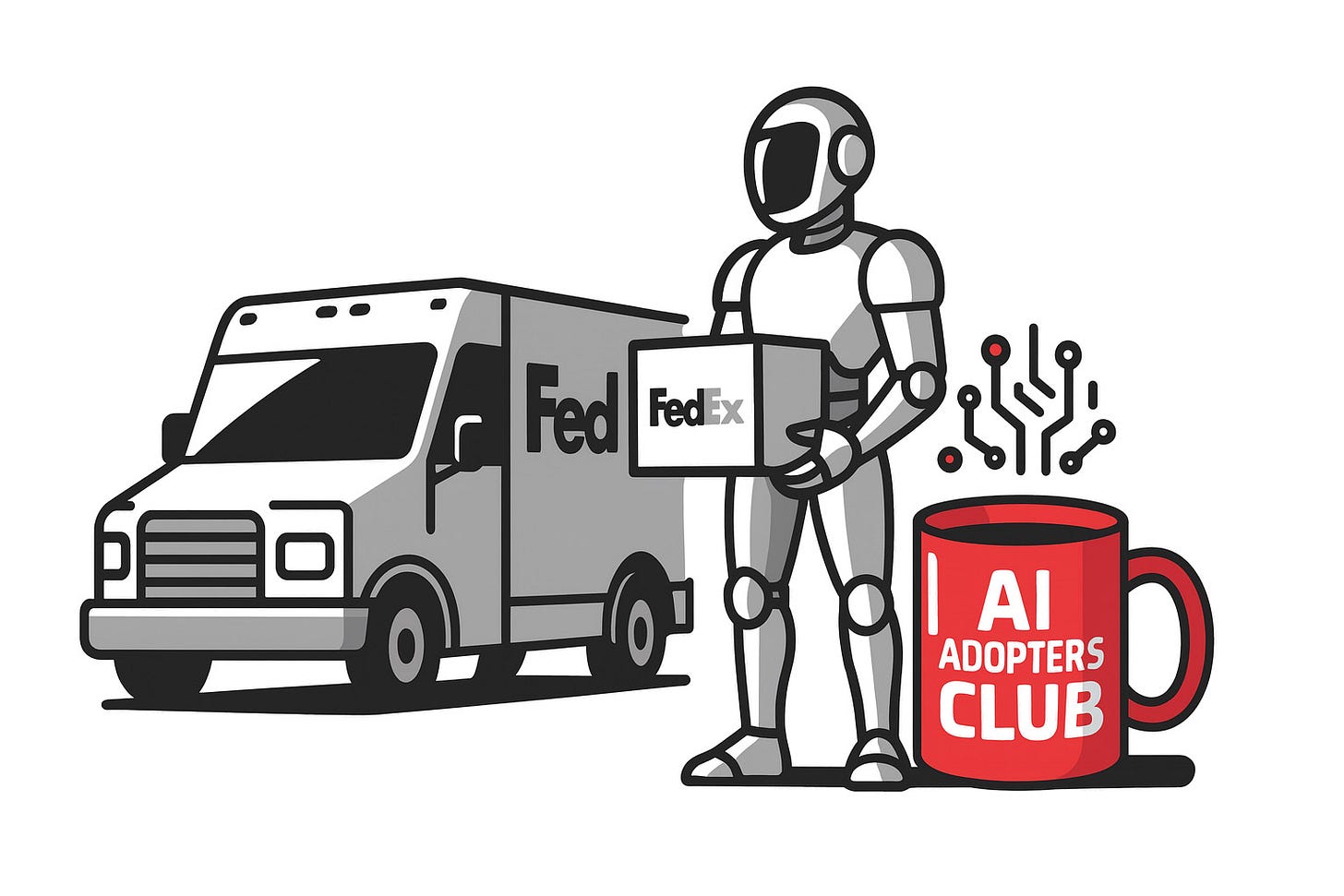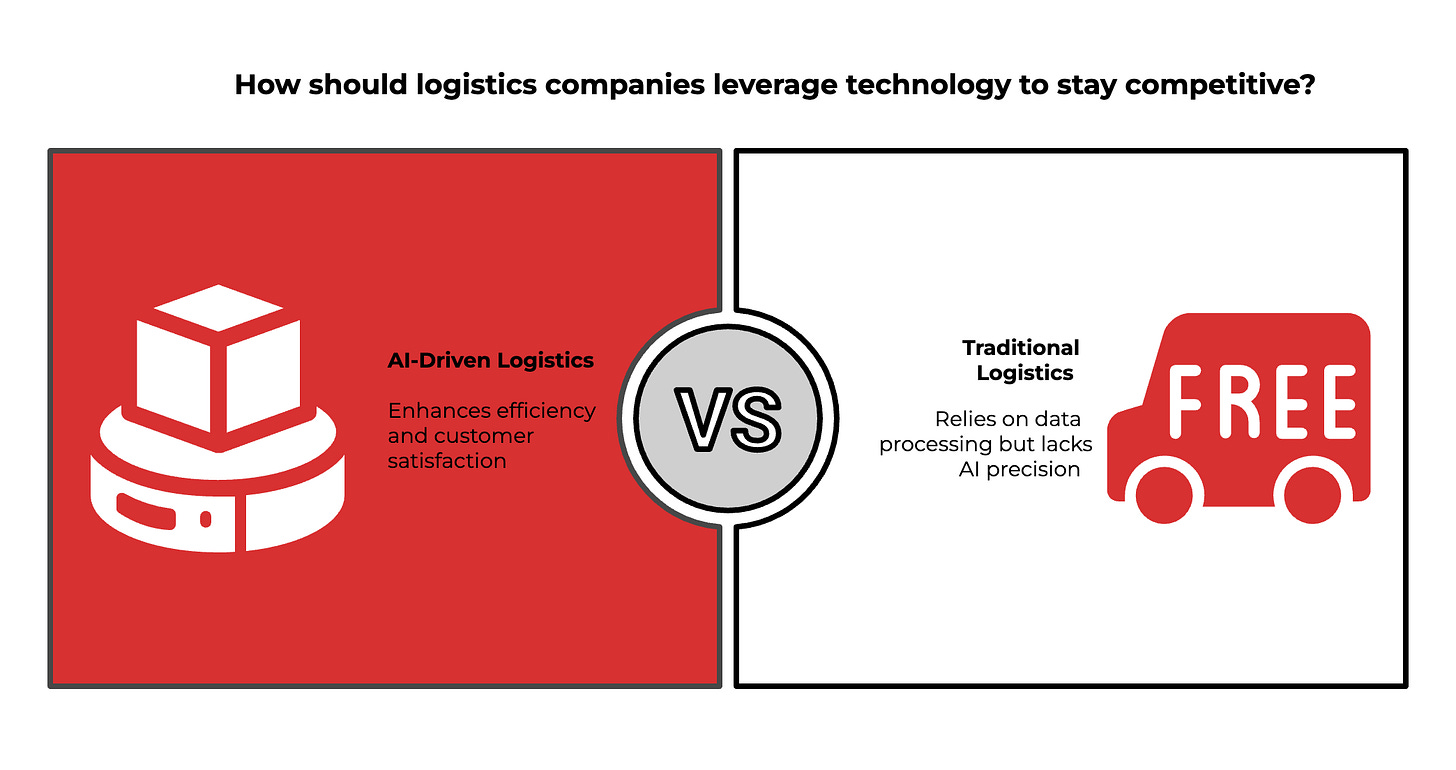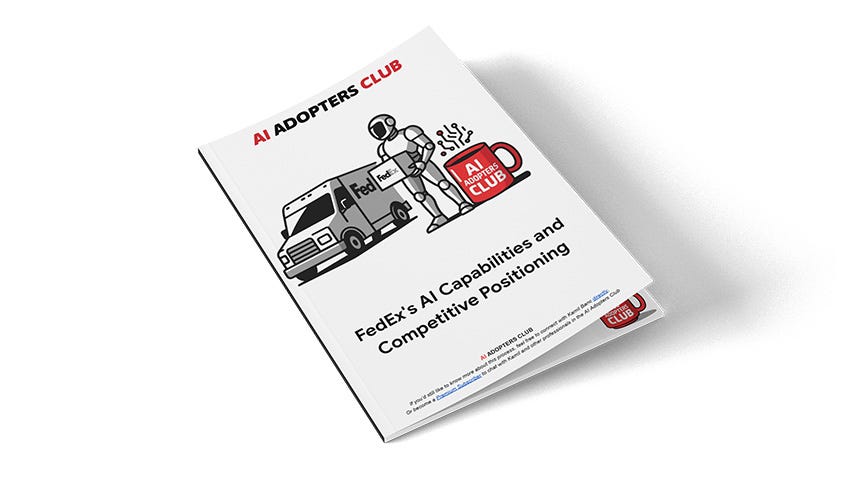FedEx's $100 Billion AI Problem
While competitors build AI-powered logistics empires, FedEx is optimising for efficiency instead of transformation.
Hi Adopter,
Every day, millions of packages move through global supply chains that most people never think about. The box that arrives at your door tomorrow started its journey through a network of decisions made by algorithms, route optimisations calculated in milliseconds, and predictive models that anticipated your purchase before you clicked buy. But here's what's fascinating: not every logistics giant is playing this game the same way. Some are betting everything on intelligent systems that learn and adapt. Others are taking a more cautious approach, implementing smart tools where they make sense. The difference in these strategies is about to reshape an entire industry, and FedEx sits right at the centre of this transformation.
The new logistics arms race
The global freight industry generates over $1.4 trillion annually, but the real battle isn't being fought with trucks and planes anymore. It's happening in server farms and algorithm development labs.
FedEx processes over one petabyte of data every single day. That's enough information to fill 200,000 DVDs. Daily. Yet while this data goldmine flows through their systems, competitors are wielding AI like a precision instrument to reshape how logistics works fundamentally.
The stakes couldn't be higher. In today's delivery-obsessed economy, 65% of customers will abandon a retailer after just two or three late deliveries. Miss twice, lose forever.
How UPS weaponised algorithms
UPS didn't just adopt AI, it rebuilt itself around it. Their ORION route optimisation system now saves the company from driving 100 million miles every single year. That's not a rounding error. That's the equivalent of driving to the moon and back 200 times.
But the real transformation runs deeper. UPS has systematically automated 62% of its package volume through AI-powered facilities, enabling them to reduce their workforce by 43,000 employees between 2020 and 2023.
Meanwhile, Amazon's AI has become so sophisticated at predicting customer demand that it improved regional forecast accuracy by 20%. This allows them to position inventory closer to customers before they even know they want it.
Need a strategy for your own AI transformation? Book a 25-minute AI Discovery Call with Kamil Banc ($299, or complimentary for AI Adopters Club premium members). You'll get a concrete, board-ready plan tailored to your biggest bottlenecks.
FedEx's tactical response
FedEx isn't standing still. The company successfully delivered $4 billion in structural cost reductions through its DRIVE programme, partly enabled by AI deployments.
Their fdx digital commerce platform aims to convert logistics data into real-time intelligence for merchants. They've deployed AI-powered sorting robots in major hubs from Cologne to Memphis. Their Customs AI tool simplifies complex international shipping documentation.
These are smart, targeted solutions. But they reveal something troubling about FedEx's overall AI strategy.
The $100 billion gap
Here's where the story takes a darker turn for FedEx. While the company has been optimising for capital efficiency, bringing CapEx as a percentage of revenue to an all-time low, Amazon is playing an entirely different game.
Amazon's management has indicated 2025 capital expenditure could exceed $100 billion. That's not a typo. FedEx's cautious financial discipline may be protecting short-term margins while Amazon builds the AI infrastructure of tomorrow.
But the real competitive threat isn't just about spending. It's about architecture. Our comprehensive analysis reveals a critical gap in FedEx's AI strategy that could determine whether they remain a logistics leader or become a legacy also-ran.
Download the full 27-page strategic analysis and discover:
The "missing middle" vulnerability that threatens FedEx's entire network efficiency
Three specific AI capabilities where FedEx lags 18-24 months behind rivals
Why fdx could either save the company or become a $2 billion distraction
The exact roadmap Amazon is using to build an "AI-native" logistics empire
Five strategic recommendations to close FedEx's competitive gaps before it's too late





